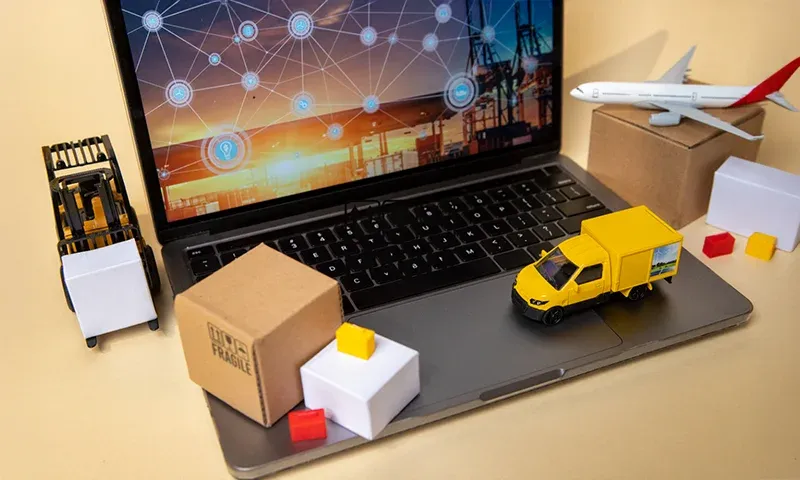ECM: The E-Commerce Advantage
Pollux is more than an ECM system—it’s an all-in-one engine built to scale with modern e-commerce, not slow it down.

Cybercommerce is the cornerstone of the retailing future because business houses of all sizes have been issuing invitations to the cyber world to be able to reach their consumers as globally as the company. But growth comes with the grandeur of dominance. From entrepreneurial backgrounds to mammoth conglomerate houses, all have been taking the risk and sweat to be able to keep up with the ever-changing e-commerce wave—from stock to smiling consumers.
One of the first technologies that naturally occur to an organization to resolve an issue like this is an Enterprise Commerce Management (ECM) system. Having the capacity to handle features like product information management (PIM), order management, customer relationship management (CRM), and analytics on the same platform, an ECM system has the possibility of being capable of automating business processes, making them smoother, and generally making the entire customer experience a better one.
In this blog, we’ll explore the top 5 challenges e-commerce businesses face today and how an ECM system can provide the solutions needed to overcome them.
As the web shopping culture has been scattered across various channels, organizations sell through various channels these days. Whether it's on their site along with web-based marketplaces like Amazon or click-and-mortar retailing, multi-channel inventory management can become a nightmare.
The Problem:
- Stockouts and Overstocks:
- Channel Confusion:
- Manual Tracking:
How ECM solves This:
Inventory management is optimized by ECM software and provides end-to-end real-time visibility by channels. Since the inventory management feature is built-in, businesses are able to:
- Track inventories both through sales channels and also by warehouses.
- Sync stocking updates so online storefronts, marketplaces, as well as physical stores sync.
- Utilize the demand forecasting function in calculating demand prediction by history, seasonality, and past sales pattern without influencing stockout or overstock.
- Automatic low-stock or high-demand product alerts to assist in the facilitation of company's pre-emptive action-taking to make the inventory ready and prevent customer disappointment.
By providing one view of inventory on hand, an ECM system enables companies to become owners of the correct quantities of inventory, decrease order fill lead time, and enhance customer satisfaction.
Consumers today expect a smooth shopping experience wherever they engage with a brand—be it through desktop, mobile, or in-store. That is hard for brands that desire their online and offline channels to communicate with each other fluidly.
The Challenge:
- Siloed Customer Experiences:
- Order Fulfillment Complexity:
How ECM Solves This:
ECM solution consolidates all the e-commerce functionality—web, mobile, marketplace listings, inventory management, and order management—onto one platform. With all the functionality on one platform, an ECM system offers an omnichannel experience in a single, seamless manner by:
- Channel-less integration of information such that businesses can offer a personal experience whether or not the client is physical or virtual. i.e., shopping baskets, order history, client preferences are all there whether or not the client is physical or virtual.
- Channel-rich orders with all points of inventory visible and fill ability (store, warehouse, third party).
- Synchronizing real-time content to make product details, price, and promotion accessible everywhere across touchpoints to enable a smooth customer experience end-to-end along the journey.
With offline-online silos disappearing, an ECM system allows businesses to turn the purchasing process upside down to one of frictionless and seamless nature and spark loyalty and conversion.
Customer expectations are never higher, especially in e-commerce where convenience and speed reign. Customers expect fast answers to queries, customized service, and rapid trouble shooting with minimal disruption.
The Challenge:
- Response Latency:
- Trace Issues:
How ECM Solves This:
Another way ECM tackles this is to bring customer relationship management (CRM) and e-commerce functions under one unified picture of all the things each of their customers are experiencing. Knowing that unified vision, organizations can:
- Trace customers through a variety of different channels and contact points so service reps can look at real-time buying history, previous service requests, and proclivities. This allows them to react sooner, and with greater accuracy.
- Streamline customer care activities like ticketing, prioritization, and closure to achieve real-time response and accurate problem resolution.
- Implement data analytics to active customer engagement in the form of product recommendation, reward points, or support as a behavior- and preference-driven feature.
Companies can automatically enhance customer support quality, reduce response time, and achieve greater satisfaction, an imperative feature in achieving enduring loyalty through an ECM system.
Its commerce pulse is part of its product information. Price, product description, images, and specs—missing, inconsistent, and non-existent—at hand available through channels is maddening, and yet a steady throb.
The Challenge:
- Product Data Inconsistency:
- Time-Sucking Data Maintenance:
- Scalability Issue:
How ECM Solves This:
ECM has all their products' Product Information Management (PIM) environment with the product information stored in one repository. With it, companies can:
- Put actual product facts across all channels, minimize errors, and a master product information source.
- Optimize so companies are able to quick and easy product information and update multiple sale channels like web shops, online shops, and on-sale promotions.
- Scale incrementally with single-source data to support vast product inventories, where adding, editing, or deleting products is simple and straightforward for teams to do as they grow.
Through the positioning of product information within an ECM system, organization will achieve increased accuracy, increased automation of tedious processes, and provide customers with an end-to-end consistent product experience.
As data privacy is a primary concern, customer information needs to be kept private by e-commerce companies. Legal requirement compliances like GDPR, CCPA, and other data protection regulations are required along with being demanding.
The Challenge:
- Complexity of Compliance:
- Lack of Control over Data:
How ECM Solves This:
An ECM system offers protection and compliance to the data by:
- Secure access control and encryption to protect sensitive customer data.
- Compliance structuring of auto-installation software like data retention policy, audit trails, and compliance reports.
- Single point for data management, where the security gets installed everywhere on all systems and points of contact in a single place.
By incorporating data management into the organization, and by integrating compliance and security processes as part of the ECM system, organizations can remove in-place data leakage risk, as well as remain compliant with privacy legislation.
Conclusion: How ECM Drives E-Commerce Success
ECM businesses must manage everything from customer service and data protection to inventory and multichannel alignment. But, with an Enterprise Commerce Management (ECM) platform, businesses can automate processes, enable collaboration, and provide a best-in-class customer experience.
An ECM system is an e-commerce software platform that integrates most key competencies such as product data, customer service, inventory management, and regulatory functionality in one system. It can be tailored and make it shinier and less buggy and eventually drive growth by fixing the legacy blemishes of e-commerce.
Because the front end of e-commerce continues to advance on a daily basis, it is not an option. but a necessity for organizations to have an ECM system that does not want to fall behind and offer world-class customer experiences.
Why You Need Pollux
It's not an ECM system type; it's your e-business partner. Not a kludge-hacked template system, but a custom-built and designed platform to build e-businesses like yours today. Intelligent design, flexibility, and automation in one master platform.
Pollux provides you with more than some software doohickey-you're getting:
- Unified Control:
- Lightning-Fast Onboarding:
- Proactive Support & Innovation:
Pollux isn't here to get your business running—it's here to get it started. Growth doesn't just happen. With Pollux, it's a strategy.








